|
|
Updated as per
AN ANNOTATED CHECKLIST OF THE SPHINGIDAE OF BOLIVIA, December 2009
Updated as per Sphingidae (Lepidoptera) de Venezuela, Compilado por: María Esperanza Chacín; December 2009
Updated as per French Guiana Systematics; April 12, 2011
Updated as per "A Hawk Moths fauna of southern Maranhão state, Brazil, ... "; NEVA: Jahrgang 34 Heft 3 November 2013; via Jean Haxaire; April 5, 2014
Updated as per personal communication with Steve Nanz (Arima, St. George, Trinidad, March 22, 2015); March 29, 2015
Updated as per personal communication with Anna & Frank West (Frenza Rancho Grande, Rondonia, Brasil, August, 1993); April 23, 2022
|
Unzela japix japix
(Cramer, 1776) Sphinx
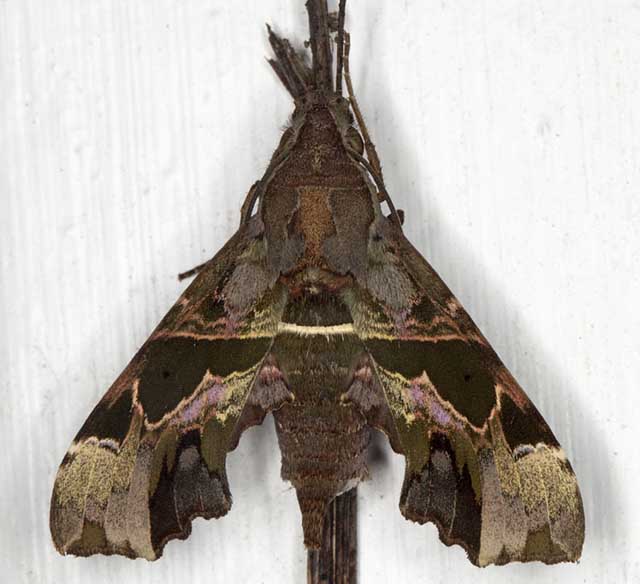
Unzela japix japix, ASA Wright Nature Centre, Arima, St. George, Trinidad,
March 22, 2015, 350-400m, courtesy of Steve Nanz.
This site has been created by Bill Oehlke.
Comments, suggestions and/or additional information are welcomed by Bill.
TAXONOMY:
Family: Sphingidae, Latreille, 1802
Subfamily: Macroglossinae, Harris, 1839
Tribe: Dilophonotini, Burmeister, 1878
Genus: Unzela Walker, 1856 ...........
Species: japix japix (Cramer, 1777)
|
DISTRIBUTION:
Unzela japix japix (wingspan: approx. 44-45mm)
flies from Mexico to Amazonia. Suriname is the specimen type
locality. It has also been recorded in northwestern and
southeastern Venezuela: Aragua: El Limón,
Barinas: Barinas, Bolivar: Uonken, Portuguesa: Ext. Exp. San Nicolas, 56 Km de Guanare
and Mesa de Cavacas, cr. de Guanare, Zulia: Rio Kasmera, Rio Yasa, Sierra de Perijá, at elevations from 0 - 450 m..
It has also been observed in Trinidad: St George: Arima.
In French Guiana it has been taken in Belizone and Saint Georges de l'Oyapock.
Vladimir Izersky (possibly in error) confirms it in Peru: Junin.
Jean Haxaire confirms it in Bolivia: La Paz, Santa Cruz; and in Brazil: Rondonia (A&FW); southern Maranhao.
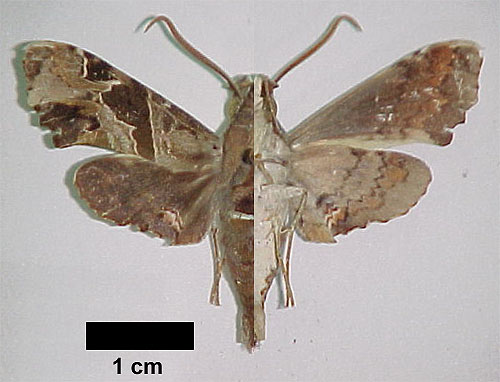
Unzela japix japix, Venezuela, from Hawkmoths of Venezuela,
courtesy of Dr. María Esperanza Chacín
and José Clavijo A., Ph.D.
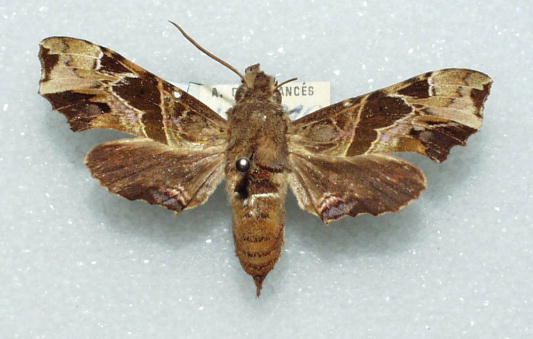
Unzela japix japix, Mexico, courtesy of Manuel Balcazar-Lara.
FLIGHT TIMES:
Unzela japix japix probably has two to three broods annually, with adults taken in May to June, August to
September and from December to January. Steve Nanz reports a March flight in northern Trinidad.
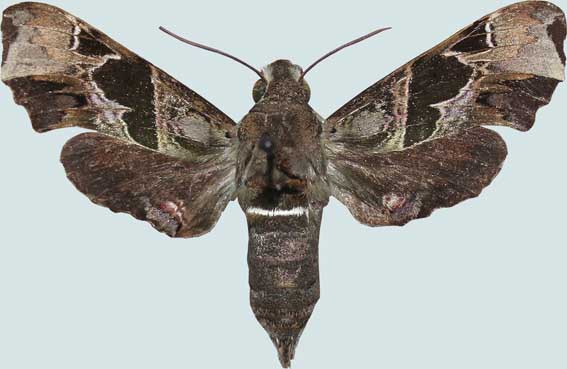
Unzela japix japix, Coviriali, Junin, Peru,
January 19, 2008, 662m, courtesy of Vladimir Izersky.
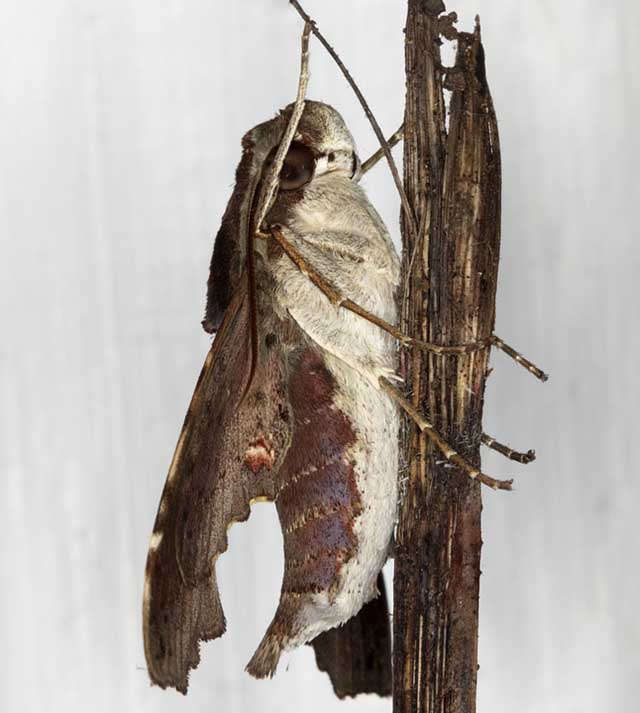
Unzela japix japix, ASA Wright Nature Centre, Arima, St. George, Trinidad,
March 22, 2015, 350-400m, courtesy of Steve Nanz.
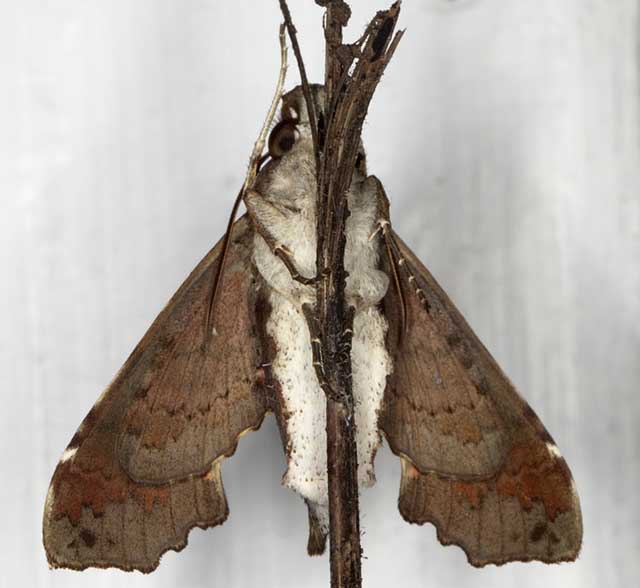
Unzela japix japix, ASA Wright Nature Centre, Arima, St. George, Trinidad,
March 22, 2015, 350-400m, courtesy of Steve Nanz.
ECLOSION:
Adults eclose from pupae formed in subterranean chambers.
SCENTING AND MATING:
Females call in the males with a pheromone released from a gland at the tip of the
abdomen. Both males and females nectar at flowers.
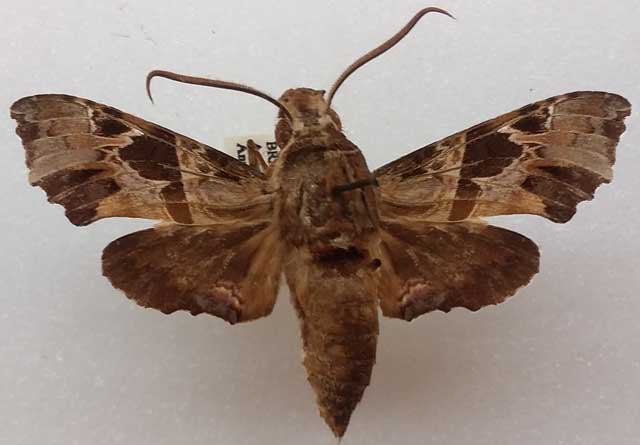
Unzela japix, 45mm, Frenza Rancho Grande, Rondonia, Brasil,
August 1993, courtesy of Anna & Frank West,
digital repair by Bill Oehlke.
EGGS, LARVAE, PUPAE:
Larvae possibly feed on Vitus tiliifolia and other members of the Vitaceae family, however, thus far it seems
they are limited to Dilleniaceae.
The "horn" is very long in early instars and head is relatively large.
Tulane University website reports larvae on Pinzona coriacea.
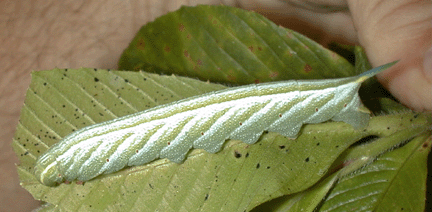
Unzela japix on Pinzona coriacea, Tulane University.
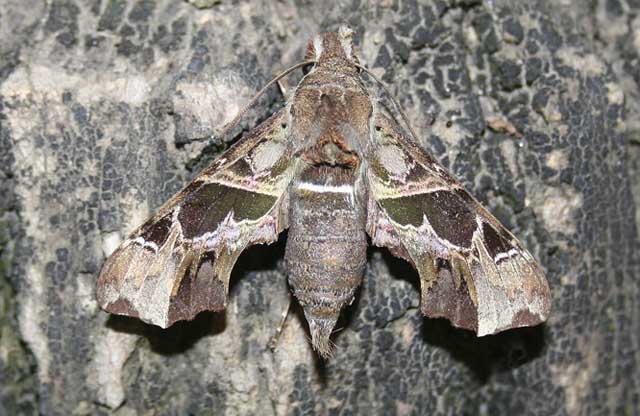
Unzela japix japix, Coviriali, Junin, Peru,
January 19, 2008, 662m, courtesy of Vladimir Izersky.
Larvae also feed on Tetracera volubilis of the Dilleniaceae family. The "horn" is quite diminished in the final
instar and now the head is small compared to body girth.
Eclosion from pupa is about four weeks after pupation. The pupa is dark and smooth with a long, sharp cremaster.
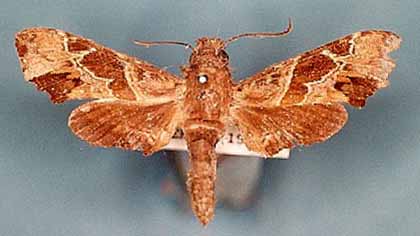
Unzela japix japix
Return to Sphingidae Index
Return to Dilophonotini Tribe









